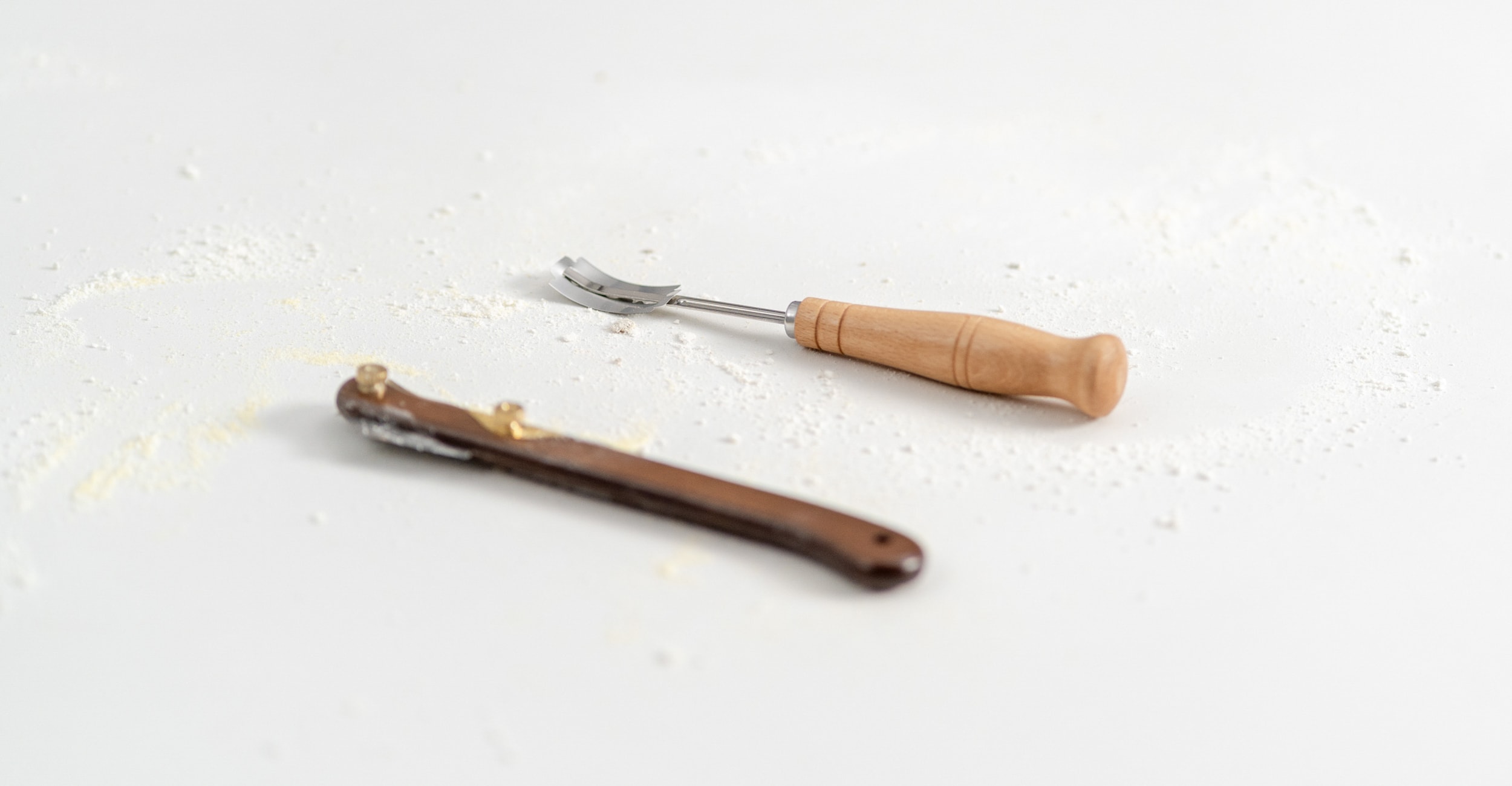
You can score a loaf of bread with just about anything sharp: a curved or straight lame, scissors, razor blade, serrated knife, or even a scalpel, but that doesn’t mean you should. There’s always the best tool for the job, and sometimes that’s the one that you have. Some tools definitely work better than others — you can see our recommendations below.
Please email us at techniques@challengerbreadware.com with your comments and questions.
As you know, your dough is full of water. And what happens to water when it’s heated? It turns to steam. If you didn’t score your dough, the steam would find the weakest spot – the path of least resistance – to find its escape. This is what bread bakers call blowouts, and we all hate them.
When you score your dough, you’re creating a weak spot, basically telling the steam where to escape. You’ll notice that most scoring patterns that you see are symmetrical, so that as the dough expands and the steam escapes, it’ll expand evenly so that the shape of your dough stays the way you intended.
When scoring your dough, our recommendation is to use a curved lame for batards and other dough shapes where you want a pronounced ear and a straight lame for boules and other dough shapes where you just need to give the steam a place to escape. Besides being decorative, scoring your dough before you put it into the oven is an essential step for most lean breads.